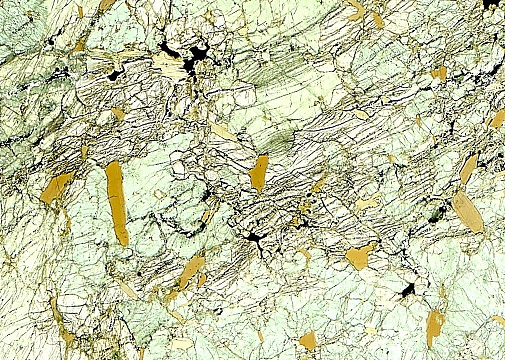|

Hand specimen
The rock sample was taken from an outcrop consisting
of Lewisian (Precambrian) basement gneiss. Within the gneisses are
streaks, bands and lenticles of basic and ultrabasic rocks. This
particular rock consists almost entirely of two types of pyroxene and
phlogopite, a type of mica. |

Plane polarised light
In thin section, the two pyroxenes, chrome diopside (a
clinopyroxene) and enstatite (an orthopyroxene) can easily be
distinguished, the former being a distinctly green colour, the latter
a very pale greyish brown. On rotation of the stage the phlogopite, a
type of mica, shows distinct pleochroism from almost colourless to
dark brown. |
|

Cross polarised light
The two pyroxenes can be distinguished by their
birefringence; that of diopside is moderate, enstatite is low. NB at
least three pyroxenes are in the extinction position. |
Map
showing locality of Carr Brae (NG8914 2475), SSE of Dornie, Scotland.

Created with Memory-Map. ©Crown Copyright. Licence number
100034184. www.memory-map.co.uk
Back to thumbnails.
|